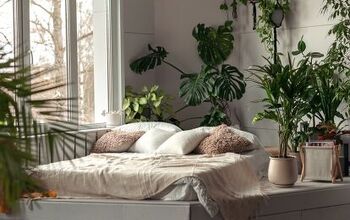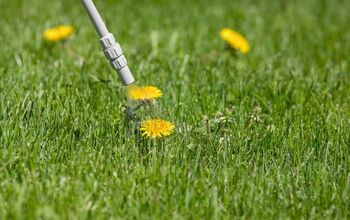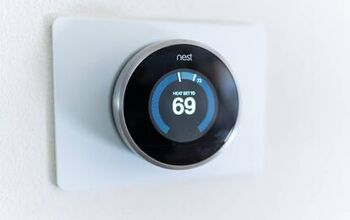How To Protect Houseplants From Pests

It’s bad enough having stubborn pests in your garden, let alone your house. Sadly, in many cases, even the plants in your house are not safe from pests. That’s why so many green-thumbed homeowners want to know how to protect houseplants from pests.
The best way to protect houseplants from pests is to quarantine them before you bring them inside. Carefully inspect them and wash the leaves to remove common houseplant pests like spider mites and aphids. Keep the humidity at 40%-60% and avoid reusing soil from outside or an already opened bag that could be contaminated.
Avoid overwatering your plants as well, or else the soggy soil may attract fungus gnats. Try not to use pesticides, as they can ultimately damage the soil and the plant itself. Follow along as we explore how to protect houseplants from pests.
How Do You Protect Indoor Plants From Bugs?
1. Use Fresh Soil
It’s a bad idea to put indoor plants in soil from your outdoor garden. There’s always a good chance that the soil is infested with pests. Ideally, you should buy a fresh bag of soil that you only use when it’s time to set up your houseplants.
Even a bag of soil that sits outside can attract bugs if it’s already open. Place any open bag of soil in a controlled environment, such as a shed or garage, where it isn’t as exposed to the elements.
2. Avoid Overwatering
It’s all too easy to overwater your houseplants, especially if they appear to be withering. However, overwatering a houseplant is just as bad as letting it get too dry. Not only can this cause root rot, but it can also attract pests.
This is an easy way to attract fungus gnats that are equally annoying and hard to get rid of. Research your plants to figure out exactly how much water they need to thrive. Avoid giving them any more water than that, or else you may attract bugs.
It’s a great idea to set out some sticky traps around your plants to catch fungus gnats and flies. Sticky traps may not be visually appealing, but they can at least help with the headache of dealing with flying pests.
3. Inspect Plants Beforew Bringing Them Inside
You can’t simply bring plants into your house and expect them to be free of pests. Many stubborn houseplant pests, such as spider mites, are quite sneaky and hard to detect. Such pests often hide on top of and beneath leaves.
The small size of many common plant pests makes them hard to find unless you inspect them closely. That said, it’s vital to carefully inspect the leaves, stems, and soil of any plant before you bring it into your house. Otherwise, you may welcome pests into your house that will quickly spread to your other plants.
4. Clean Them Regularly
It may sound like a lot of work, but you can protect your houseplants from pests if you clean them regularly. This isn’t as rigorous as it sounds, and it doesn’t take long to wash their leaves. Simply get the leaves wet and wipe them down to inspect them and remove pests.
The best time to do this is when you water your plants. Not only will this help protect them from pests, but it will ensure your houseplants look as great as they can.
5. Quarantine Your Plants
You may understandably be in a rush to put your favorite plants in your house. However, rushing to bring plants inside is often a mistake that can negatively affect your other plants. That’s why it’s important to quarantine plants before you put them near your other houseplants.
This will give you time to find and eliminate any pests that may linger on the plant. You only realistically need to quarantine the plant for a week before you can put it near other plants. Check the plant for pests throughout the week and continually water it.
6. Maintain Healthy Humidity
Humidity is an important factor when it comes to maintaining a healthy environment for your houseplants. Some pests are attracted to humid environments whereas others, like spider mites, are attracted to dry leaves. You can split the difference if you keep the humidity level between 40% and 60%.
The best way to do this is to set up a humidifier in your house near the plants. Humidity meters also let you monitor the humidity level in your house.
7. Use Trusted Sources
Plant nurseries don’t set out to give you plants that are infested with pests. However, this is sometimes unavoidable, as they source many plants from various locations. Don’t hesitate to ask the staff about their pest control efforts to see how seriously they take it.
Read online reviews for the plant nursery where you buy plants from to make sure they are reputable. Although the plants may look great, they may also come along with some unwanted bonuses, such as aphids. Make sure to quarantine store-bought plants before you bring them inside.
8. Keep The Soil Clean
Dirty soil that is covered with fallen leaves and twigs can attract pests. Debris provides cover for pests that makes it easy for them to hide and even reproduce. That’s why you must remove fallen leaves and twigs as needed.
This is easy to achieve, as you can simply incorporate it into your standard plant maintenance routine. Avoid putting decorations, such as artificial rocks, in the soil as well. Anything that isn’t the soil or the plant itself can invite pests.
Summing It Up
Protect your indoor houseplants by using fresh soil. It’s also important to maintain a humidity level of between 40% and 60% and avoid overwatering them. Quarantine your plants for a week before you put them near your other houseplants. Clean the leaves once every 1-2 weeks and inspect them for common pests, like spider mites.
Related Guides:

Nick Durante is a professional writer with a primary focus on home improvement. When he is not writing about home improvement or taking on projects around the house, he likes to read and create art. He is always looking towards the newest trends in home improvement.
More by Nick Durante



























